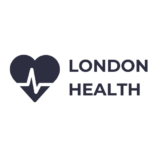Millions of people take painkillers everyday; most people use painkillers to treat mild conditions including head and muscle aches. The most common painkillers are listed below:
Paracetamol
How is paracetamol used?
Paracetamol is commonly used to ease mild or moderate headaches, muscle aches or toothache; it can also be used to bring a person’s temperature down.
How does paracetamol work?
Paracetamol works by masking the feeling of pain; it prevents the production of prostaglandins, which are substances that the body releases as a reaction to an injury or illness; this stops the person from feeling pain. If a person has a raised temperature, paracetamol lowers the temperature by targeting the region of the brain that controls body temperature.
Is paracetamol suitable for everyone?
In general, paracetamol is safe for most people to use; however, there are some people that should avoid taking paracetamol; these include:
- People with liver problems
- People with kidney problems
- People that are dependent on alcohol
Children under the age of 3 months should not generally be given paracetamol, although some doctors may recommend it is used in exceptional circumstances; you should ask your doctor of pharmacist for advice before you take paracetamol or give paracetamol to your child if you are unsure and always take care to read the label. Paracetamol is safe for pregnant women.
Are there any side-effects?
Reactions to paracetamol are extremely rare and the vast majority of people suffer no side-effects from taking this medication; however, side-effects are possible. Examples of side-effects include:
- A rash which develops on the skin
- Damage to the kidney and liver
- Low blood pressure (when given through a drip in hospital)
- Disorders affecting the blood
Recommended dosage
If you are taking prescription medication then you should check if it is safe to take paracetamol; ask your doctor or pharmacist for details. You should not take more than 8 paracetamol tablets over the course of a 24 hour period; generally you should have a gap of 4 hours between doses. If you taken more than 8 tablets in 24 hours you should see your doctor or seek emergency medical help; paracetamol overdoses can potentially be fatal.
Aspirin
Aspirin is classified as a non-steroidal anti-inflammatory drug but it can be used to treat an array of different health conditions.
What is aspirin used for?
Aspirin is a very versatile medication, which can be used to treat several different conditions. Commonly, aspirin is used as an analgesic but it can also be used to treat rheumatic conditions, menstrual pain, angina, migraines and to prevent clotting.
Are there any side-effects?
Most people do not experience side-effects when they take aspirin but side-effects are possible; these include:
- Nausea
- Indigestion
- Irritation in the digestive system
- Vomiting
- Allergic reactions
- Inflamed stomach
Is aspirin safe for everyone?
Children aged 16 or under should not be given aspirin and people with following conditions should also not take aspirin:
- Peptic ulcer
- Allergies to non-steroidal anti-inflammatories or aspirin
- Blood disorders, such as haemophilia
People that have had a peptic ulcer in the past and those with kidney or liver problems should seek medical advice before they take aspirin; it may not be suitable for these people.
Codeine
Codeine is usually combined with paracetamol and is used to ease mild or moderate pain; tablets that combine paracetamol and codeine (usually known as co-codamol) are available from most pharmacists. Codeine can be addictive so it is important to take it only when absolutely necessary.
Non-steroidal anti-inflammatory tablets
Non-steroidal anti-inflammatory medications (also known as NSAIDs) are usually used to ease pain in the musculoskeletal system; these medications are also used to reduce swelling and can help to lower body temperature. The most well-known NSAIDs are aspirin and ibuprofen. Ibuprofen works in the same way as paracetamol; it blocks the actions of prostaglandins, which stops the person from feeling pain. The anti-inflammatory effects of ibuprofen usually take much longer than the analgesic effects. There are many different brands and companies that manufacture NSAIDs but labels should clearly state which medicines the medication contains. Other examples of NSAIDs include diclofenac, naproxen, mefanemic acid and meloxicam.
Are NSAIDs suitable for everyone?
NSAIDs are not recommended for everyone; as a general rule, pregnant women and women that are trying to conceive should steer clear of this type of medication and people with conditions that affect their stomach, liver or kidneys and those that have recently had surgery should also consult their GP before taking these medications. People that suffer from asthma should also avoid taking NSAIDs.
Are there any side-effects?
Most people take NSAIDs without experiencing any side-effects but some people suffer from side effects; examples of possible side-effects include:
- Indigestion
- Stomach ulcers (which can contribute to anaemia and the formation of a hole in the stomach wall, known as a gastrointestinal perforation)
Rare side effects of taking these medications include heart attacks, heart failure, damage to the kidneys and liver and hypertension (high blood pressure).
Taking NSAIDs alongside other medication
It may be dangerous to take NSAIDs alongside other medications, so it is important to ask your doctor for advice before you go ahead and take this kind of medication. Examples of medications that react with NSAIDs include:
- Clozapine (to treat schizophrenia)
- Certain diuretics
- Methothrexate (used to treat some types of cancer and rheumatoid arthritis)
- Phenytoin (used to treat epilepsy)
- Lithium (used to treat depression)
- Warfarin (used to prevent the formation of blood clots)
- Ciclosporin (used to prevent the body from rejecting transplanted bone marrow or organs)
In most cases, doctors will look for alternative treatments if you are already taking medication for another health condition; this will help to reduce the likelihood of you suffering from side-effects.

